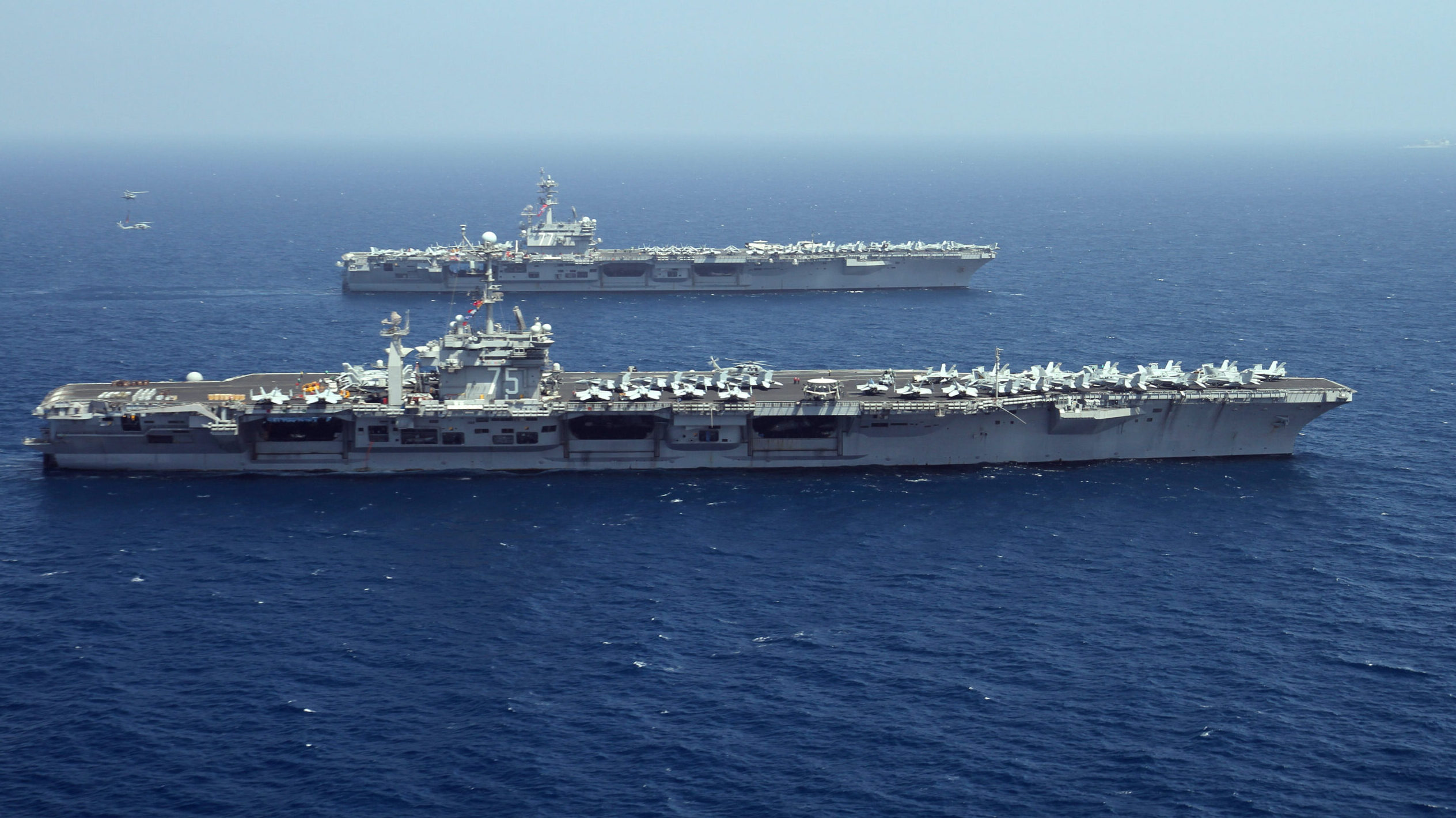
Maintenance for America’s carriers are at risk under a full year continuing resolution, a top officer said today. (U.S. Navy/Lt. Juan David Guerra)
WASHINGTON: A full year continuing resolution would devastate the Navy’s payrolls, cut $500 million from its top acquisition priority, delay maintenance on several aircraft carriers and submarines as well as result in flying hour cuts across the board for service pilots.
Those were just a few of the statistics Rear Adm. John Gumbleton, the Navy officer primarily charged with managing the service’s annual budget requests, shared with reporters today during a telephone roundtable.
A continuing resolution effectively provides the Pentagon with the same budget it had in the previous year and is used to give lawmakers extra time to draft and pass the normal slate of government spending bills. That means military programs that have advanced to more expensive phases cannot access additional funding and new programs — also dubbed “new starts” — are unable to begin work.
The current continuing resolution expires on Feb. 18, at which time Congress will have three options: pass the annual spending bills, extend the current continuing resolution or allow government funding to lapse.
Gumbleton said the pay raise lawmakers included in the annual defense policy bill means the service is on the hook for an additional $1.5 billion in paychecks, but doesn’t yet have the money to honor that. “So in the Navy, we plan to bring in 31,000 new sailors. But because we can’t make payroll, we would actually reduce that by 23,000,” he said.
On the Columbia-class submarine, the service’s No. 1 acquisition priority, the rear admiral said the program would be looking at a “half a billion” dollar cut without a new appropriations bill. He also acknowledged that would result in consequences for the program’s infamously small schedule margin, but did not get into further details.
Gumbleton added that a full year continuing resolution would delay maintenance on five submarines, two aircraft carriers and mean a reduction in flying hours for all pilots.
RELATED: A potential full-year CR? Here’s what defense leaders are saying
One area the admiral asserted the Navy will not allow setbacks in is any future conflict involving Russia and Ukraine. “We’re not going to let a CR impact that… We’re not going to take risk in our forward-deployed force,” he said. But “we’re [going to] essentially take a ruthless prioritization to maintain our forward-deployed forces at the expense” of other programs such as maintenance, infrastructure and construction.
One trick the Pentagon has historically used to get around the continuing resolution’s restrictions is submit “anomalies” to Congress. Those anomalies basically amount to congressional hall passes for very important projects to break the spending rules everyone else is to obliged to keep.
Asked about the Navy’s plans, Gumbleton declined to discuss specific anomalies the service would seek. But, he argued the use of the legislative loophole is damaging to the military as a whole because it demonstrates to lawmakers that the Pentagon can successfully operate under what is a very harmful situation.
“The last thing we want to do is show how we can actually live with a CR that lasts 12 months,” he said.
As problematic as continuing resolutions may be, they are far from a rarity. In the past two decades, all but one year saw the enactment of a continuing resolution. As such, Gumbleton bluntly stated that the service has learned to schedule contract awards in the first fiscal year quarter at its own risk. But with February on the horizon, the military’s second quarter is well underway without a new appropriations bill in clear view.
The fact the Navy assembled a press conference today featuring Gumbleton is a telling reflection on its own of how the military views its current budgetary predicament. The rear admiral himself is hardly a feature of Washington’s think tank or conference scene. His office is usually only spotlighted once per year on “budget day,” when the Pentagon officially unveils its portion of the president’s next annual budget request.
And beyond the occasional pleas for “stable and predictable funding,” the Pentagon usually relies on politically-appointed, civilian officials and four-star service chiefs to make public appeals to Congress for money.
Separately, the National Defense Industrial Association today published a new white paper highlighting that a full year continuing resolution would “cut $36 billion in congressionally intended growth from the Defense Department.”
“In many key areas of capability development such as space and AI, the commercial sector is the primary driver of technological advancement and DoD’s race against time includes improving incentives for this sector to focus on national security challenges,” according to the white paper’s authors.
“But these companies already find the government challenging to work with; time is running out to bring the technology sector into the national security market in a serious manner and a full-year CR would burn another year of time that we cannot afford to squander,” the white paper continues.
Norway’s top officer on his ‘biggest challenge,’ next frigate and new NATO neighbors
Gen. Eirik Kristoffersen, Norway’s Chief of Defense, talks to Breaking Defense about his plans for spending on new frigates and subs, the challenges of upgrading Norway’s “digital backbone” and refilling the military’s stocks.


























